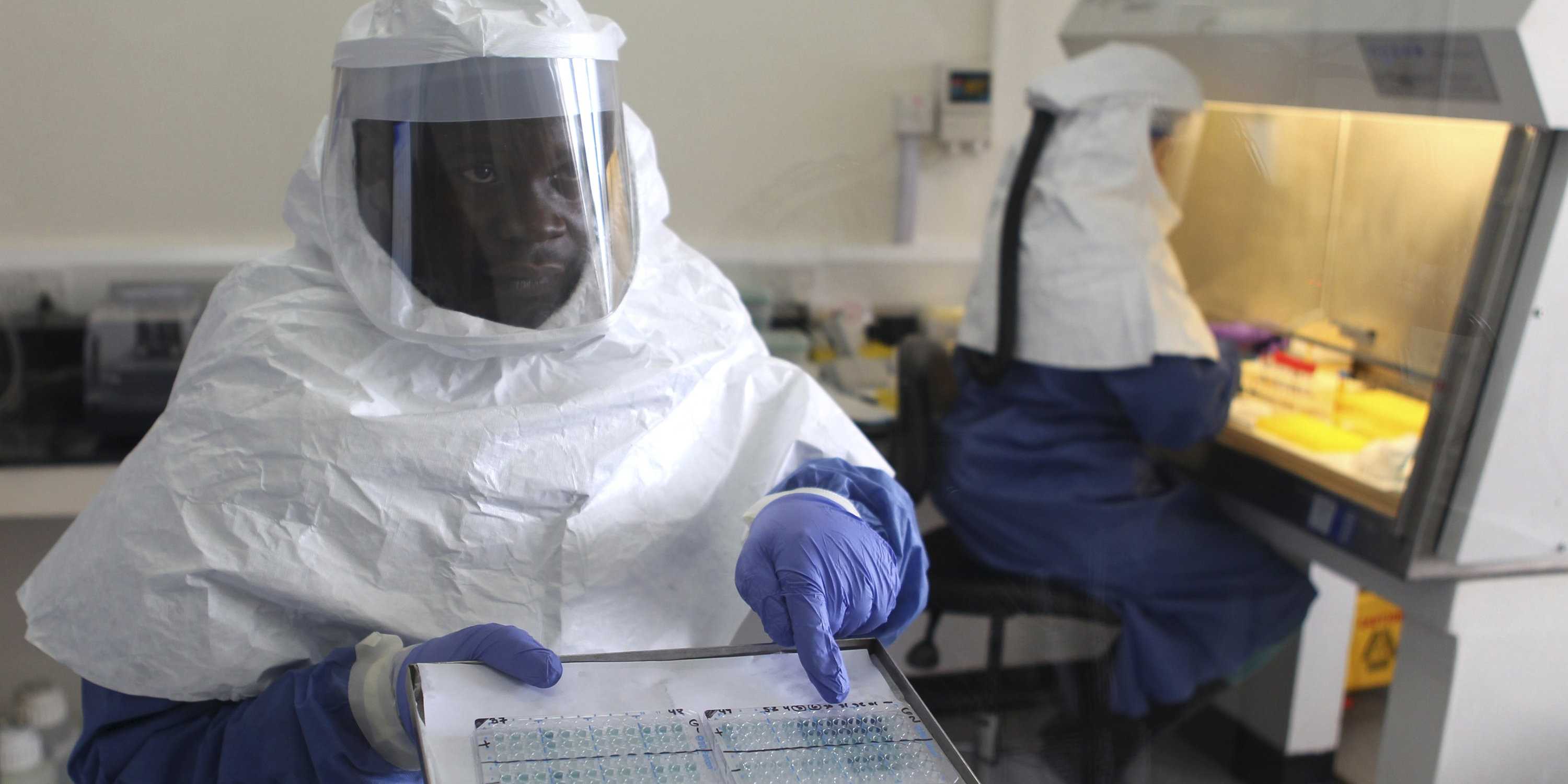The Center for Disease Control has issued a Level 1 alert only three times during its entire history: in the aftermath of Hurricane Katrina, in response to the 2009 H1N1 flu pandemic, and most recently for the recent West African Ebola outbreak. With no confirmed Ebola cases in the US yet, this extreme caution is a testament to how dangerous the Ebola virus can be.
Ebola virus disease, also known as Ebola hemorrhagic fever, is a particularly nasty illness that has a fatality rate of 90%. It’s a zoonotic disease that can spread quickly from human to human transmission via blood, secretions, or other bodily fluids. Symptoms include intense weakness, muscle pain, fever, and a sore throat. In the later stages of the disease, patients often present with bleeding from the eyes, ears, nose, and a hemorrhagic rash. This excessive bleeding is caused by an Ebola virus-produced protein that increases blood vessel permeability. Ultimately, death is caused by the shock of blood constantly leaking from your vessels.
The current outbreak affecting Guinea, Liberia, Sierra Leone, and other West African countries is the worst ever seen, with nearly 4,000 cases and over 2,000 deaths. CDC director Dr. Tom Friedan says the situation is “spiraling out of control” as more people are infected and the available resources dwindle. Wael Dabbous, who travelled to Sierra Leone to film a documentary on the outbreak, describes his experience as “being in a warzone where the enemy is invisible”.
Dabbous is referring to the microscopic Ebola virus, but the invisible enemy of poverty also has a hand in advancing this outbreak. Patients are quarantined in barely functioning hospitals that lack doctors and nurses either because they’ve all died or refuse to work for fear of infection. For countries where there’s only one doctor per 100,000 people, a huge epidemic like this can bring the hardly-there healthcare system to its knees. Like any other disease, Ebola may be treated with a fast response and proper medical support. But like in any other epidemic, it’s the rich that can be cured and the poor that are left to die. The two American health workers that caught Ebola so far were immediately flown to the Emory University Hospital, where highly-trained infectious disease specialists successfully treated them. This specialized infectious disease care is impossible to find in the West African countries that are really affected by the virus.
Our worldview is typically clinical when it comes to crises in foreign nations. A horrible Ebola outbreak is something that happens “over there” and of little concern to us “over here”. We think it’s too bad, bemoan the state of healthcare in Africa, blame poverty, and move on with our comfortable lives. But Dr. Margaret Chan raises an interesting question about our response to this outbreak: “Ebola emerged nearly 40 years ago. Why are clinicians still empty handed, with no vaccine or cure?” The answer? Because Ebola is transmitted through close contact and therefore geographically isolated to poor African countries. Thus, there is little incentive for pharmaceutical companies to work on a cure. The reason we don’t have a clear treatment for Ebola isn’t medical; it’s financial. When profit and money are so tied in with medicine, it’s no wonder the world health system is still extremely underprepared to deal with global emergencies. And that’s a problem that needs to be rectified before the next great outbreak hits even closer to home.
By Melissa Li

